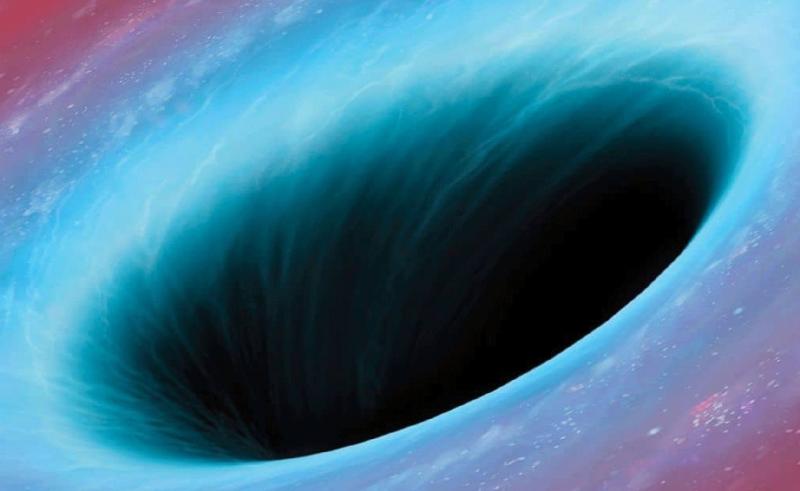The Black Hole at the Birth of the Universe



The big bang poses a big question: if it was indeed the cataclysm that blasted our universe into existence 13.7 billion years ago, what sparked it?

Three Perimeter Institute researchers have a new idea about what might have come before the big bang. It’s a bit perplexing, but it is grounded in sound mathematics, testable, and enticing enough to earn the cover story in Scientific American , called “The Black Hole at the Beginning of Time.”
What we perceive as the big bang, they argue, could be the three-dimensional “mirage” of a collapsing star in a universe profoundly different than our own.
“Cosmology’s greatest challenge is understanding the big bang itself,” write Perimeter Institute Associate Faculty member Niayesh Afshordi , Affiliate Faculty member and University of Waterloo professor Robert Mann , and PhD student Razieh Pourhasan .
Conventional understanding holds that the big bang began with a singularity – an unfathomably hot and dense phenomenon of spacetime where the standard laws of physics break down. Singularities are bizarre, and our understanding of them is limited.
“For all physicists know, dragons could have come flying out of the singularity,” Afshordi says in an interview with Nature .
The problem, as the authors see it, is that the big bang hypothesis has our relatively comprehensible, uniform, and predictable universe arising from the physics-destroying insanity of a singularity. It seems unlikely.
So perhaps something else happened. Perhaps our universe was never singular in the first place.
Their suggestion: our known universe could be the three-dimensional “wrapping” around a four-dimensional black hole’s event horizon. In this scenario, our universe burst into being when a star in a four-dimensional universe collapsed into a black hole.
In our three-dimensional universe, black holes have two-dimensional event horizons – that is, they are surrounded by a two-dimensional boundary that marks the “point of no return.” In the case of a four-dimensional universe, a black hole would have a three-dimensional event horizon.
In their proposed scenario, our universe was never inside the singularity; rather, it came into being outside an event horizon, protected from the singularity. It originated as – and remains – just one feature in the imploded wreck of a four-dimensional star.
The researchers emphasize that this idea, though it may sound “absurd,” is grounded firmly in the best modern mathematics describing space and time. Specifically, they’ve used the tools of holography to “turn the big bang into a cosmic mirage.” Along the way, their model appears to address long-standing cosmological puzzles and – crucially – produce testable predictions.
Of course, our intuition tends to recoil at the idea that everything and everyone we know emerged from the event horizon of a single four-dimensional black hole. We have no concept of what a four-dimensional universe might look like. We don’t know how a four-dimensional “parent” universe itself came to be.
But our fallible human intuitions, the researchers argue, evolved in a three-dimensional world that may only reveal shadows of reality.
They draw a parallel to Plato’s allegory of the cave, in which prisoners spend their lives seeing only the flickering shadows cast by a fire on a cavern wall.
“Their shackles have prevented them from perceiving the true world, a realm with one additional dimension,” they write. “Plato’s prisoners didn’t understand the powers behind the sun, just as we don’t understand the four-dimensional bulk universe. But at least they knew where to look for answers.”



Theoretical physics is grounded in known physics and explored through the power of mathematics. Concepts such as our universe being a three dimensional projection from a four dimensional universe are certainly possible, but still these are highly speculative. Interesting to think about plausible extrapolations of our current knowledge.
I have such a hard time wrapping my mind around additional dimensions. That's one thing I've always struggled with about string theory, for example.
Are forces and waves affected by extra dimensions? Would light and gravity propagate the same? Would gravitational bodies like the proposed 4 dimensional star form differently, or burn through material differently? The idea of extra dimensions bugs the hell of me.
Cool article, though.
As I understand it the unique character of each string is a function of how it conforms to the many dimensions. These dimensions are below the classical dimensions. That is any particle within our 3+1 dimensional world when inspected closer will reveal strings operating in additional levels of dimensions nested within those we intuit. This is tough to discuss in a post.
One of the best videos I have found on this is this one by Brian Greene:
Oh, man. What was a memory refresher! Thanks for that. I'd almost forgotten how completely beautiful string theory is. He didn't mention this but I was reminded about the way atoms resonate with different frequencies of radiation that are like the same note in different keys. It's like harmonics. There just HAS to be something to that. I have his Elegant Universe book, but it's been a long, long time since I've read it. I can't believe it's almost 20 years old now. Do you know if anyone's been able to find experimental evidence for the extra dimensions yet?
To my knowledge, string theory remains purely theoretical.
Has the work come to a standstill? It doesn't seem like I've heard much about it at all lately. Everyone seems to be focusing on the standard model.
Hard to gauge that. Seems to me people are still very actively working on string theory. Thing is, I do not have any feel if the number of researchers has increased or decreased.
It occurs to me that quantum field theory might have things in common with string theory. The various fields associated with different particles strike me a being reminiscent of the different dimensions in string theory.
A particle might be an ensemble with the various string harmonics serving as the voices; using the music analogy.
So....if our universe came about because of a star in another universe.....where did that universe come from?
I see infinite possibilities. And also the possibility that time has always existed and that there has always been infinite universes giving birth to new universes.
Yes, ultimately everything that exists is supported by the quintessential substance of existence and this substance is necessarily eternal.
All sorts of nested universe spawning and death scenarios can be imagined given an eternity of existence endlessly interacting with emerging forms.
Our own existence as a species on a little planet in an okay solar system within one of 100+ billion galaxies in one of an uncountable number of potential universes seems very insignificant.
But that runs counter to the foundational premise that we're the chosen people of an invisible sky fairy! How can we be so self-important if we're tiny and irrelevant?
We are important because we decide what is important (to us). (No objective thinking required here.)
Because eventually we will be relevant. The purpose of life on the earth is to spread beyond earth. We have conquered the 3 dimensions and can be anywhere we want to be in the third dimension but what limits us is the fourth dimension of time. If we can conquer time, then we can be anywhere in the universe we wish to be past, present, and future which brings the possibility of a "sky fairy" more real.